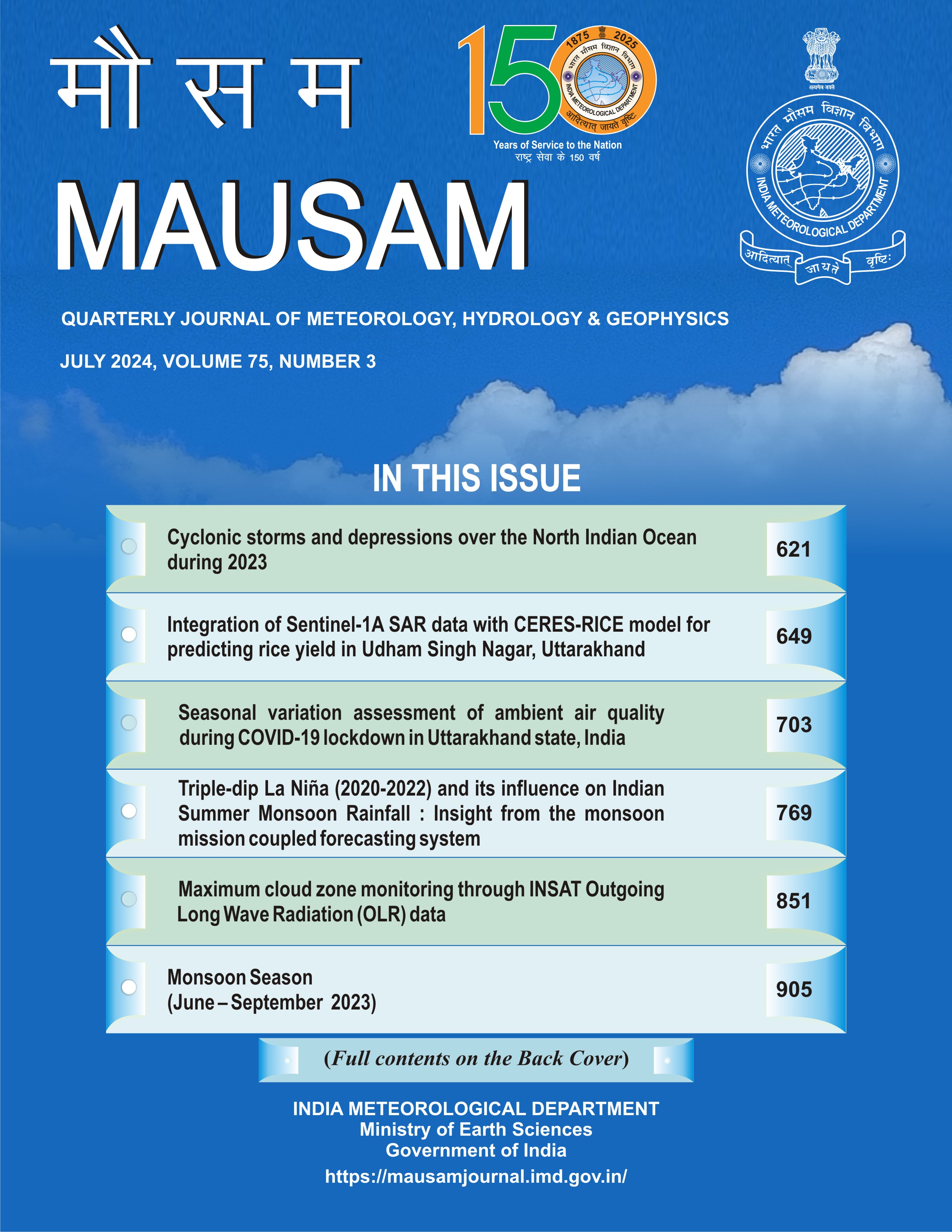The Impact of Data Uncertainty on Identifying Precipitation Trends in India
DOI:
https://doi.org/10.54302/mausam.v75i3.6300Abstract
The study investigates the effect of missing data, variability, and measurement errors on precipitation data in India, as well as the potential errors in trend analysis that result from neglecting these factors. Daily rainfall data and RSTN (ratio of station grids) for the entire country from 1951 to 2015 were obtained from APHRODITE and used both simple and weighted linear regression to estimate trends. The findings of the simple linear regression indicated that on an annual scale, roughly 1489 grids (31% significant at the 95% confidence level) displayed positive trends, whereas 3150 grids (57% significant at the 95% confidence level) exhibited negative trends. In contrast, using the WLR method, a total of 2274 grids displayed positive trends, and 2365 grids showed negative trends, with approximately 25-30% of the grids having significant trends at an annual timescale. Overall, approximately 86% of positive trends and 68% of negative trends remained unchanged when using the WLR method instead of the LR method, respectively. However, approximately 23-26% of significant positive trends and about 46% of significant negative trends in the LR method were converted to non-significant trends in the WLR method. Moreover, only approximately 0.5% of positive significant trends and 2-3% of negative significant trends reversed to significant negative and positive trends, respectively. The study emphasizes the importance of considering missing records and data variability over time to obtain accurate trend analysis.
Downloads
Published
How to Cite
Issue
Section
License
Copyright (c) 2024 MAUSAM

This work is licensed under a Creative Commons Attribution-NonCommercial 4.0 International License.
All articles published by MAUSAM are licensed under the Creative Commons Attribution 4.0 International License. This permits anyone.
Anyone is free:
- To Share - to copy, distribute and transmit the work
- To Remix - to adapt the work.
Under the following conditions:
- Share - copy and redistribute the material in any medium or format
- Adapt - remix, transform, and build upon the material for any purpose, even
commercially.



